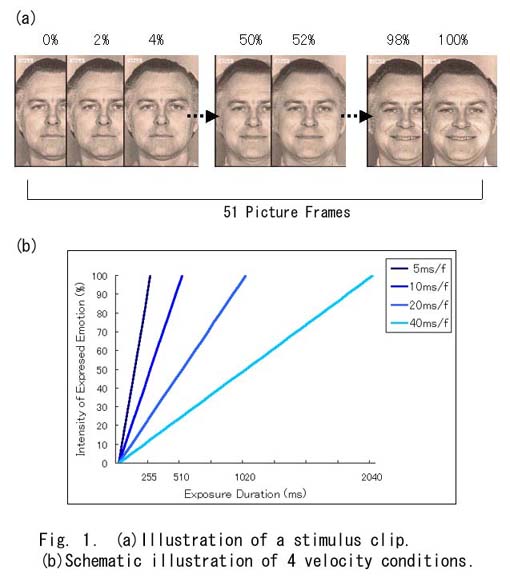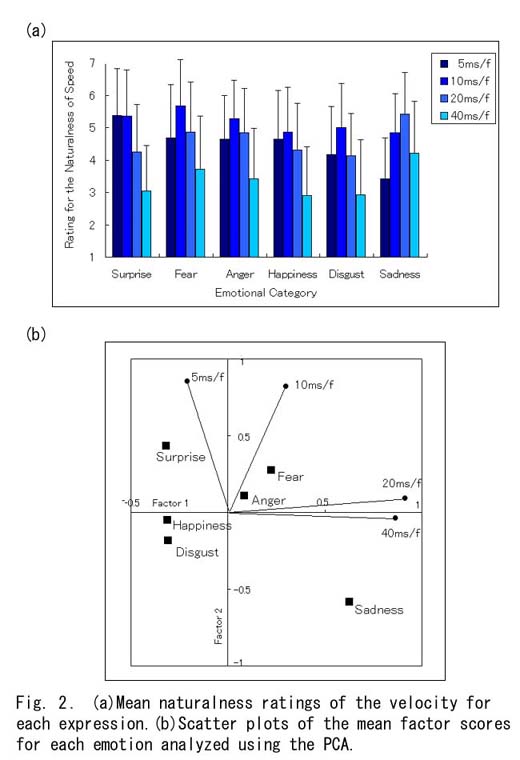SATO Wataru Laboratory
The dynamic aspects of emotional facial expressions
(Sato & Yoshikawa: Cognition and Emotion)
INTRODUCTION
Dynamic changes in the facial expression of emotions are a particularly valuable source of information in face-to-face interactions.
However, our understanding of such dynamic information in facial expressions, especially in depicting the expression of particular emotions, remains very limited.
The present study explored the dynamic aspects of facial expressions of emotion from the perceivers' viewpoint. We presented computer-morphed animations of facial expressions to subjects, and asked them to rate the naturalness of the rate of change of each animation clip for that particular emotion.
METHODS
Stimuli:
We made computer-morphing animations of six facial emotions, presenting a total of 51 frames in succession (Fig. 1a). Each stimulus was presented at one of 4 velocities (Fig. 1b): 5, 10, 20, and 40 ms/frame.
Procedure:
The subjects evaluated each clip in terms of the naturalness of the rate of change of a particular emotion.

RESULTS
The results showed that the naturalness of the expressions depended on the velocity of change, and the patterns for the four velocities differed with the emotions (Fig. 2a).
Principal component analysis (PCA) of the data extracted the structures that underlie the evaluation of dynamic facial expressions, which differed from previously reported structures for static expressions in some aspects (Fig. 2b).

DISCUSSION
These results suggest that the representations of facial expressions include not only static but also dynamic properties.
Return to
Recent Research.
Return to
Main Menu.

